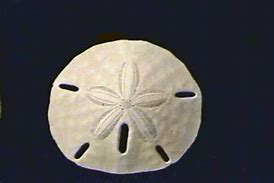
Sand Dollar
The sand dollar is a type of marine invertebrate related to sea urchins and starfish. It is known for its distinctive round shape and intricate pattern on its exoskeleton. Here are some interesting facts about sand dollars:
Appearance: Sand dollars have a round or disc-shaped body that is typically flat. They are covered in a hard exoskeleton called a test, which is made up of calcium carbonate plates. The test has a pattern of small holes and five petal-like markings on the surface, resembling a flower. The color of sand dollars can vary from white to gray, brown, or purple.
Habitat and Distribution: Sand dollars are found in shallow marine environments, particularly sandy or muddy seabeds. They can be found along coastlines worldwide, including the Pacific Ocean, the Atlantic Ocean, and the Indian Ocean.
Burrowing Behavior: Sand dollars are benthic creatures, meaning they live on the ocean floor. They have specialized tube feet that allow them to burrow into the sand or mud. By extending and retracting these tube feet, they can move through the substrate or anchor themselves in place.
Feeding Habits: Sand dollars are filter feeders. They use their tube feet and spines to capture small particles of food, such as plankton, algae, and organic matter, from the water. The particles are swept into the mouth located on the underside of the sand dollar.
Sand Dollar “Coins”: When sand dollars are alive, their exoskeletons are covered in tiny, hair-like projections called cilia, which help in feeding and movement. However, when sand dollars wash ashore or die, the exoskeletons often lose their cilia and can resemble white or pale coins, hence the name “sand dollar.”
Tube Foot Movement: Sand dollars use their tube feet not only for burrowing and feeding but also for movement. By coordinating the movement of their tube feet, they can slowly glide along the ocean floor.
Predators and Defense: Sand dollars have a few natural predators, including sea stars, crabs, and certain types of fish. To defend themselves, they can burrow deeper into the sand or use their spines to cover vulnerable areas and deter predators.
Reproduction: Sand dollars reproduce sexually, with separate male and female individuals. During spawning, males and females release eggs and sperm into the water, where fertilization occurs. The resulting larvae go through a planktonic phase before settling on the ocean floor and developing into juvenile sand dollars.
Regeneration: Sand dollars have a remarkable ability to regenerate lost body parts. If a sand dollar loses an arm or a portion of its test, it can regenerate the missing part over time.
Beachcombing and Collecting: Sand dollars are often sought after by beachcombers for their unique shape and beauty. It’s important to note that collecting live sand dollars may harm the living populations and disrupt the ecosystem. It is best to leave live sand dollars in their natural habitat and enjoy finding the sun-bleached exoskeletons washed up on the shore.